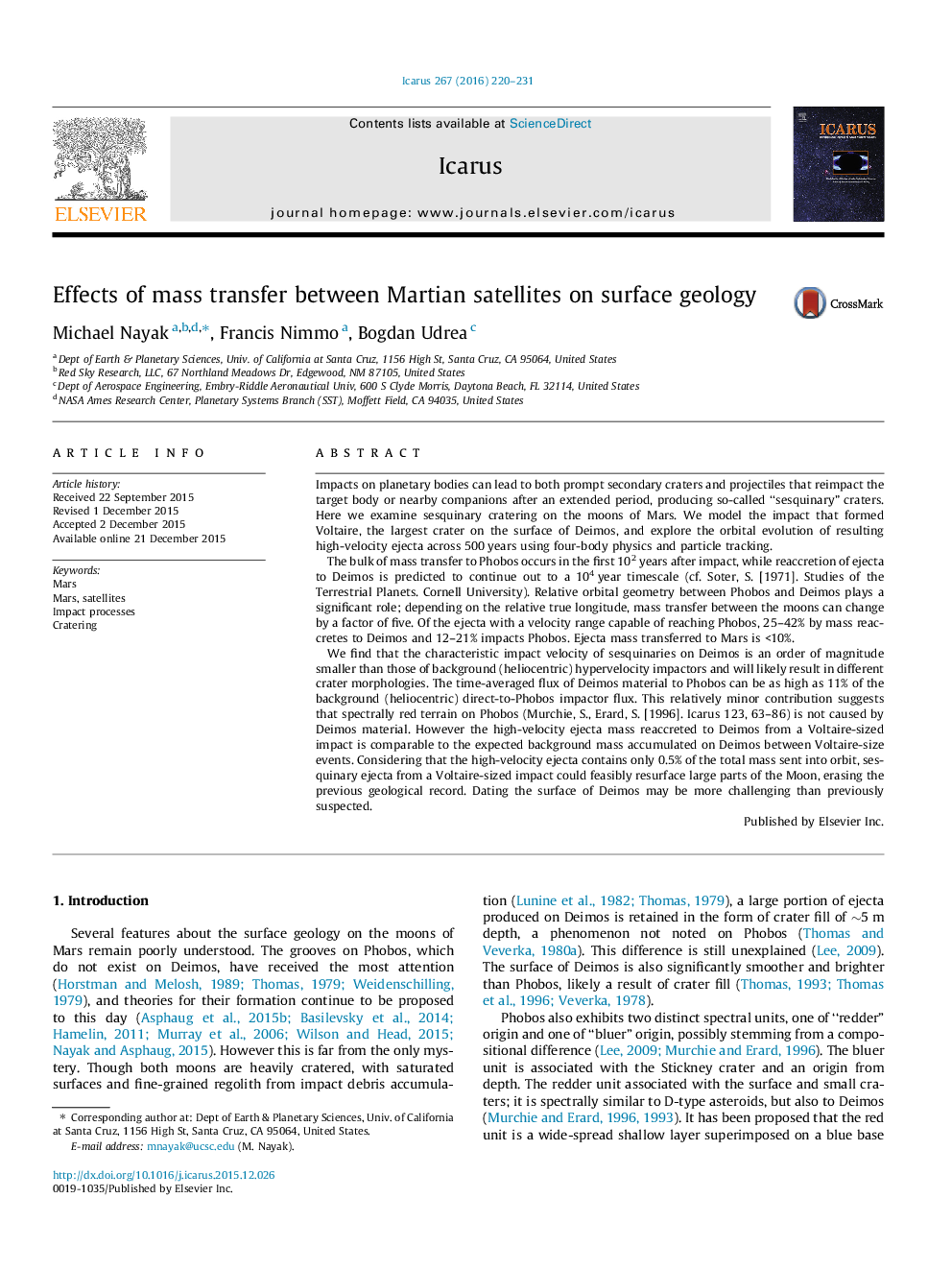| Article ID | Journal | Published Year | Pages | File Type |
|---|---|---|---|---|
| 8135694 | Icarus | 2016 | 12 Pages |
Abstract
We find that the characteristic impact velocity of sesquinaries on Deimos is an order of magnitude smaller than those of background (heliocentric) hypervelocity impactors and will likely result in different crater morphologies. The time-averaged flux of Deimos material to Phobos can be as high as 11% of the background (heliocentric) direct-to-Phobos impactor flux. This relatively minor contribution suggests that spectrally red terrain on Phobos (Murchie, S., Erard, S. [1996]. Icarus 123, 63-86) is not caused by Deimos material. However the high-velocity ejecta mass reaccreted to Deimos from a Voltaire-sized impact is comparable to the expected background mass accumulated on Deimos between Voltaire-size events. Considering that the high-velocity ejecta contains only 0.5% of the total mass sent into orbit, sesquinary ejecta from a Voltaire-sized impact could feasibly resurface large parts of the Moon, erasing the previous geological record. Dating the surface of Deimos may be more challenging than previously suspected.
Related Topics
Physical Sciences and Engineering
Earth and Planetary Sciences
Space and Planetary Science
Authors
Michael Nayak, Francis Nimmo, Bogdan Udrea,
